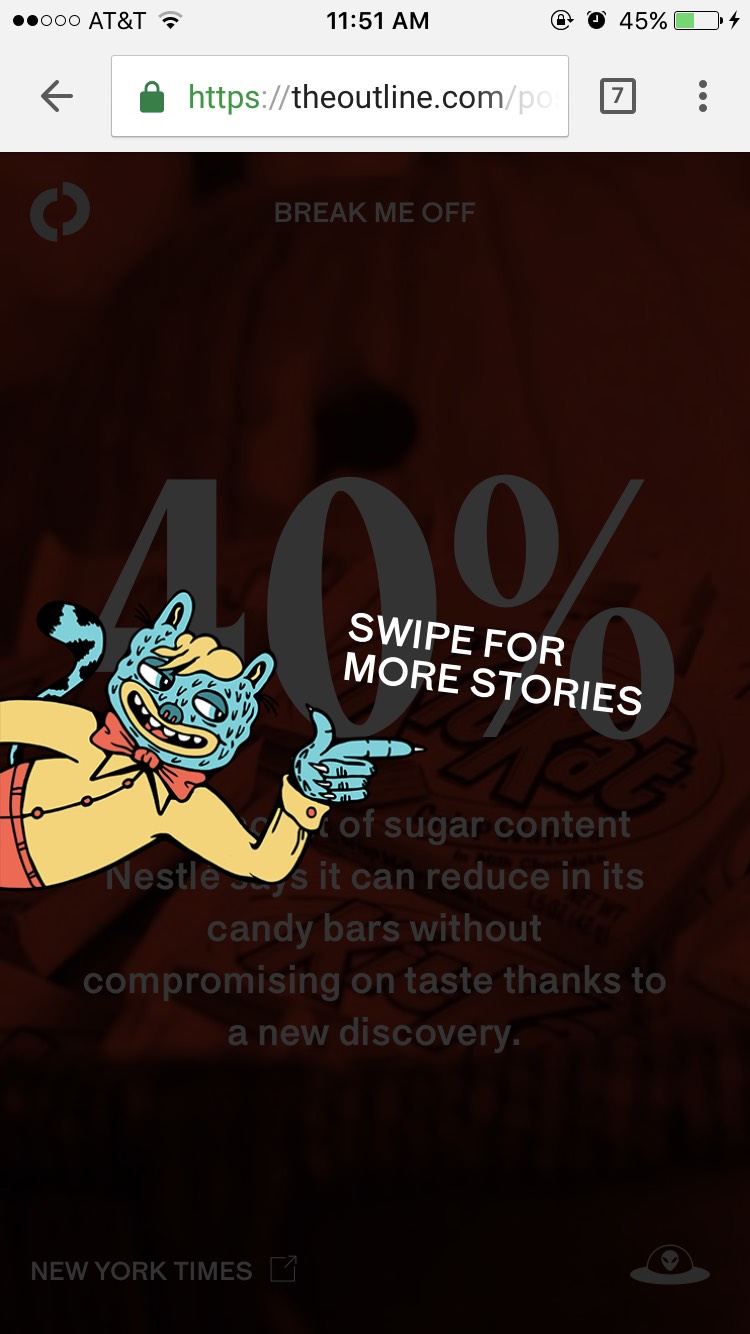On the editorial end, it’s defining its coverage against other well-established outlets: The site’s work falls somewhere between a legacy outlet like The New York Times and a digital native like BuzzFeed, Topolsky told The Wall Street Journal on Monday. It’s a “next-generation” version of the New Yorker, ostensibly, a “New Yorker for millennials.”
 On both the design and revenue sides of things, the venture-funded site is hoping to break new ground. The mobile-focused design is also graphics heavy and built around the action of swiping (including for its ads, which are kind of…fun to play around with). While other news organizations are becoming less enthusiastic about the promise of digital advertising outside of high-touch native ads, Topolsky is confident “great advertising [on the web] is possible, and we think it works”:
On both the design and revenue sides of things, the venture-funded site is hoping to break new ground. The mobile-focused design is also graphics heavy and built around the action of swiping (including for its ads, which are kind of…fun to play around with). While other news organizations are becoming less enthusiastic about the promise of digital advertising outside of high-touch native ads, Topolsky is confident “great advertising [on the web] is possible, and we think it works”:
The design is deliberately a departure from web publications engineered to get people to click from headline to headline to headline, he contends. “You won’t see a feed on The Outline,” he said. “This is about the swipe not the scroll.”
Other publishers, including Forbes and Vox Media, are experimenting with this sort of heavily mobile and Snapchat-inspired navigation.
There will be no standard ad placements on The Outline, and no programmatic selling, said Amanda Hale, chief revenue officer. Like its editorial, The Outline’s ads are designed to be full-screen, highly visual placements that are not unlike classic magazine ads on a phone.
‘There is this huge unexplored space between the banner and thousand word pieces produced by the Times T Studio,’ said Ms. Hale, referring to the Times’ group that focuses on producing content on behalf of marketers. ‘We want all of our ads to look art directed’…
Mr. Topolsky said he’s even had early conversations about other publishers potentially employing The Outline’s ad technology down the road.
This site is impossible to navigate. I have spent several minutes on home page, can’t find Glenn Beck story which I want to actually read. https://t.co/wXt7UJJJb8
— Oliver Darcy (@oliverdarcy) December 5, 2016
It is "a new kind of publication for a new kind of human" oh ok so the Outline's audience is the cast of Westworld.
— Selena Larson (@selenalarson) December 5, 2016
We have seen the future of news design, and it is…very, very Snapchatty. https://t.co/aGZ9MFkrq9
— Carly Carioli (@carlycarioli) December 5, 2016
One comment:
hello there and thank you for your info – I have certainly picked up anything
new from right here. I did however expertise some technical issues using this
web site, since I experienced to reload the web site lots
of times previous to I could get it to load properly.
I had been wondering if your hosting is OK?
Not that I’m complaining, but slow loading instances times will sometimes affect your placement in google and can damage your high-quality score if ads and marketing
with Adwords. Anyway I’m adding this RSS to my e-mail and could look out for a lot more of your respective fascinating content.
Ensure that you update this again very soon.. Lista escape room
Trackbacks:
Leave a comment